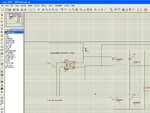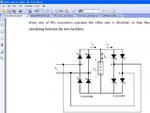adnan012
Advanced Member level 1
hi,
I want to implement a ac/ac speed controller for 1/2 HP induction motor. I have issues in driving the gates of THYRISTORS.
There are 8 THYRISTORS as shown in the converter file. Is it a good idea to make 8 isolated 5v dc supplies using 8 small transformer , rectifier bridges and linear regulators such as lm7805 and connect them as shown in the Proteus ckt (transformer and regulator is replaced by a battery for simplicity also only one sided leg is drawn in Proteus ckt). Is there any other way to drive the gates safely ? I don't want to use pulse transformers.
I have used this method in a ac/dc matrix converter with mosfets (bidirectional switch configuration) to drive a 24v volt dc motor without any problem. I want to know that this method is useful for high voltage application?
Regards
I want to implement a ac/ac speed controller for 1/2 HP induction motor. I have issues in driving the gates of THYRISTORS.
There are 8 THYRISTORS as shown in the converter file. Is it a good idea to make 8 isolated 5v dc supplies using 8 small transformer , rectifier bridges and linear regulators such as lm7805 and connect them as shown in the Proteus ckt (transformer and regulator is replaced by a battery for simplicity also only one sided leg is drawn in Proteus ckt). Is there any other way to drive the gates safely ? I don't want to use pulse transformers.
I have used this method in a ac/dc matrix converter with mosfets (bidirectional switch configuration) to drive a 24v volt dc motor without any problem. I want to know that this method is useful for high voltage application?
Regards

